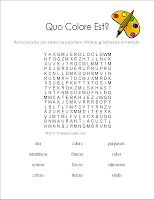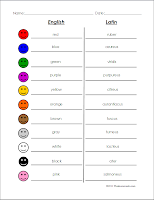Having just recently taken an intense course on the Theology of the Body focusing on the papal teachings and wisdom of Pope John Paul II, I listened to our speaker, Fr. Alan Boisclair, explain about the tremendous love that calls a man to the priesthood. It was completely inspiring. So I can tell you that I was completely excited to learn that a Little Lesson on a Brief History of the Priesthood by Mum6kids, Shell, over at Thinking Love, No Twaddle was ready to help me shed even more light on the awesomeness of the priesthood for my kiddos.
This 34 page resource pack gives tons of interesting information about the sacrament of Holy Orders, more commonly known as the priesthood. Expect to read all kinds of historical facts as well as a bit of history about the author and her spiritual journey. Quite inspirational to see how God has worked in each of our lives. The root question about the authority of the Church and her pope and bishops is answered quite well in this introductory resource.
This lesson is thought provoking as almost all her Little Lessons are, but it is unique in that it lends itself very well to discussions utilizing coloured question prompts. This meas that families can discuss this together and those who have already been confirmed or who are strong readers will find this a great independent read. Shell has included some great go-alongs including notebooking sheets, lapbooking (F3) pieces and little pieces that could be used as writing prompts, flaps or timeline pieces. Here are a few samples for you.
We look forward to using this lesson in our own little homeschool and invite you to do the same.
Thanks for all of your energy and love of our Faith, Shell! God bless you and your family for all you do to bring and explain the faith to others.
Click HERE to see this and all of Shell's Little Faith Building Lessons.
Click HERE to see all of Shell's Little Lessons and freebies she has shared.
Blessings,
Kalei


































![Fifty Famous Stories Retold [50 FAMOUS STORIES RETOLD]](http://ws.amazon.com/widgets/q?MarketPlace=US&ServiceVersion=20070822&ID=AsinImage&WS=1&Format=_SL160_&ASIN=B001TKF7KS&tag=widgetsamazon-20)



